Today Current Affairs: 17th March 2021 for UPSC IAS exams, State PSC exams, SSC CGL, State SSC, RRB, Railways, Banking Exam & IBPS, etc
Table of Contents
World’s Highest Railway Bridge:
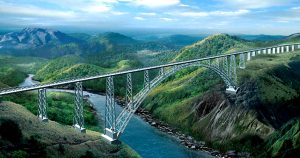
It is being constructed over the Chenab river in Jammu and Kashmir.
- The ₹1,250-crore bridge will be 359 meters above the Chenab river bed.
- The rail line is expected to be 35 metres taller than the Eiffel Tower.
- Once completed, it will surpass the record of the Beipan river Shuibai railway bridge (275 m) in China.
The ‘World Air Quality Report 2020’:
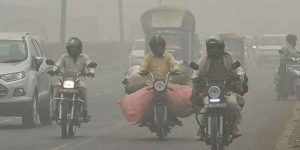
It is a report on air quality released by Swiss organization, IQAir.
- The global cities ranking report is based on PM2.5 data from 106 countries, which is measured by ground-based monitoring stations, most of which are operated by government agencies.
Air Pollution in Indian cities:
- Delhi is the world’s most polluted capital: Although Delhi’s air quality improved by nearly 15 percent from 2019 to 2020, the city still ranked as the 10th most polluted city in the world and the most polluted capital.
- 22 of the world’s 30 most polluted cities including Delhi are in India.
- Ghaziabad is the second most polluted city in the world after Xinjiang in China.
- The eight Indian cities in the top 10 list are — Bulandshahar, Bisrakh Jalalpur, Noida, Greater Noida, Kanpur, Lucknow (all in UP), Bhiwari in Rajasthan, and Delhi.
- Major sources of India’s air pollution include transportation, biomass burning for cooking, electricity generation, industry, construction, waste burning, and episodic agricultural burning.
Global Scenario:
- India is the third most polluted country in 2020, unlike in 2019, when its air was the fifth most noxious.
- Bangladesh and Pakistan were the countries in 2020 with worse average PM2.5 levels than India, said the report.
- China ranked 11th in the latest report.
- of the 106 monitored countries, only 24 met the World Health Organization annual guidelines for PM 2.5.
The Jharkhand State Employment Of Local Candidates Bill, 2021:
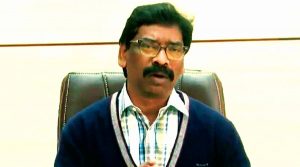
The Jharkhand government announced 75% reservation in private sector jobs with a salary of up to Rs 30,000 for locals.
- The bill will treat shops, establishments, mines, enterprises, industries, companies, societies, trusts, Limited Liability Partnership firms, and any person employing ten or more persons as the private sector and an entity.
- Every employer needs to register employees on a designated portal who are receiving a gross monthly salary or wages not more than Rs 30,000 — or as notified by the government from time to time — within three months of this bill (after turning into an Act) coming into force.
- No local candidate will be eligible to avail of 75 percent benefit without registering herself in the designated portal.
- The bill defines a local candidate as a person who belongs to Jharkhand and is registered on the designated portal.
- the employer may claim exemption where an adequate number of local candidates of the desired skill qualification or proficiency is not available.
The Orunudoi Scheme:

The Orunudoi scheme, with women as its primary target group, is perhaps the most popular one announced by BJP ahead of the Assam Assembly elections
- In December 2020, when the scheme was launched, Assam Chief Minister described it as the “largest DBT scheme in the history of Assam which will empower women and serve the needy”.
- Through Orunodoi — announced in the 2020-21 Budget — monthly assistance of Rs 830 is transferred to women members of marginalized families of Assam.
- On account of being a Direct Benefit Transfer (DBT) scheme, the money is credited directly to the bank account of the woman head of a family because they are “primary caretakers of the household”.
- The applicant, a woman, has to be a permanent resident of Assam, whose composite household income should be less than Rs 2 lakh per annum.
- Families without any women members, MPs, MLAs (former and current), members of Panchayati Raj institutions and urban local bodies, government officials, and employees of cooperative societies are excluded from the scheme.
- Families owning four-wheelers, mechanized boats, tractors or refrigerators, ACs and washing machines, or more than 15 bighas of agricultural land, are not eligible either.
Medical Termination Of Pregnancy (Amendment) Bill, 2020:
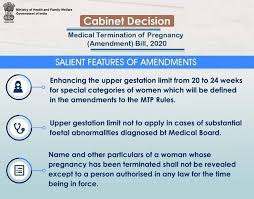
The Rajya Sabha passed the Medical Termination of Pregnancy (Amendment) Bill, 2020 that increases the time period within which an abortion may be carried out. The Bill was passed in March last year in the Lok Sabha.
- Currently, abortion requires the opinion of one doctor if it is done within 12 weeks of conception, and two doctors if it is done between 12 and 20 weeks.
- The Bill allows abortion to be done on the advice of one doctor up to 20 weeks, and two doctors in the case of certain categories of women, between 20 and 24 weeks.
- For a pregnancy to be terminated after 24 weeks in case of substantial fetal abnormalities, the opinion of the State-level medical board is essential.
- Opposition MPs said the Bill still did not give women the freedom to decide since they would need a nod from a medical board in the case of pregnancies beyond 24 weeks.
- The original Bill was framed in 1971.
World Energy Transitions Outlook Report:

The International Renewable Energy Agency (IRENA) released the World Energy Transitions Outlook report.
Key highlights of the report:
- Previewed at the virtual Berlin Energy Transition Dialogue, which began on March 16, 2021, the report proposes energy transition solutions for the narrow pathway available to contain the rise of temperature to 1.5 degree Celsius.
- The COVID-19 crisis offers an unexpected opportunity for countries to decouple their economies from fossil fuels and accelerate the shift to renewable energy sources,
- It estimated that by 2050, 90% of total electricity needs would be supplied by renewables, followed by 6% from natural gas and the remaining from nuclear.
- The agency has identified 30 innovations for the integration of wind and solar PV in power systems.
The International Renewable Energy Agency (IRENA) is an intergovernmental organisation mandated to facilitate cooperation and promote the adoption and sustainable use of renewable energy.
- It was founded in 2009 and its statute entered into force in 2010.
- The agency is headquartered in Masdar City, Abu Dhabi.
- IRENA is an official United Nations observer.
Mullaperiyar Dam Issue:
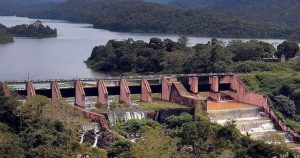
The Supreme Court said the Tamil Nadu Chief Secretary will be “personally responsible” and “appropriate action” will be taken on failure to give information on the ‘rule curve’ for the Mullaperiyar dam to the Supreme Court-appointed Supervisory Committee.
- The ‘rule curve’ in a dam decides the fluctuating storage levels in a reservoir.
- The gate opening schedule of a dam is based on the ‘rule curve’.
- It is part of the “core safety” mechanism in a dam.
Mullaperiyar Dam:
- Mullaperiyar Dam is a masonry gravity dam built at the confluence of Mullayar and Periyar rivers.
- The dam is located in Kerala but is operated and maintained by the neighboring state of Tamil Nadu.
- It was constructed between 1887 and 1895 by John Pennycuick and also reached an agreement to divert water eastwards to the Madras Presidency area (present-day Tamil Nadu).
Inter-Parliamentary Union (IPU):
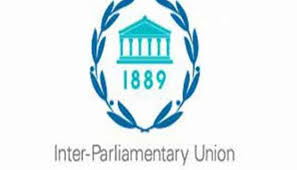
The President of the Inter-Parliamentary Union (IPU) addressed Members of Parliament at the Central Hall of the Indian Parliament.
- IPU is an international organization of national parliaments.
- It was established in 1889 in Paris.
- It was founded by statesmen Frédéric Passy of France and William Randal Cremer of the United Kingdom.
- It works with close co-operation with the United Nations (UN), regional parliamentary organizations, international intergovernmental organizations, and non-governmental organizations for the arbitration of conflict.
- It is a unique platform for observing political opinions and trends around the world.
Aim:
- To promote parliamentary dialogue worldwide and works for peace and cooperation among the peoples.
- To promote democratic governance, accountability, and cooperation among its members.
Slogan: For democracy. For everyone
Functions: Promoting parliamentary action by addressing international concerns in six main areas:
- Representative democracy.
- Peace and security.
- Sustainable development.
- Human rights and humanitarian law.
- Women in politics.
- Education, science, and culture.
Members:
- 179 countries are members of the IPU.
- 13 regional parliamentary assemblies are associate members.
- India is a member.
Headquarters:
- Geneva, Switzerland.
First Moving Supermassive Black Hole:
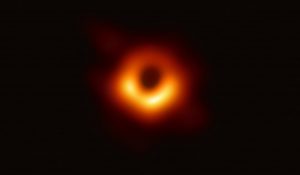
Scientists have discovered the first moving supermassive black hole whose mass is about three million times that of our Sun.
- The black hole was traveling within its own galaxy (J0437+2456) which is around 228 million light-years away from Earth.
- Scientists studied 10 faraway galaxies with supermassive black holes in the centre, expecting them to have the same velocity as that of the galaxies they reside in.
- The focus of their study was the water in the accretion disk (the spiralling mass around a supermassive black hole made of matter that is eventually ingested by the black hole).
- As the water circles around the black hole before falling into it like a liquid in a sink, it produces a laser-like beam of radio light known as a maser. These masers can tell the velocity of black holes very accurately.
About the Moving Supermassive Black Hole:
- Of the 10 black holes they studied, only the one at the center of J0437+2456 was unusual. It was not moving at the same velocity as its home galaxy.
- Besides the empirical evidence, the enormous size of these black holes had led people to imagine them to be stationary objects planted in the middle of galaxies as opposed to objects floating around in space.
- It is moving at a speed of about 1,10,000 miles per hour inside its galaxy.
Black Hole:
- It refers to a point in space where the matter is so compressed as to create a gravity field from which even light cannot escape.
- The concept was theorized by Albert Einstein in 1915 and the term ‘black hole’ was coined in the mid-1960s by American physicist John Archibald Wheeler.




